Introduction to Dzukou Valley Trek
If you are looking for a refreshing and scenic trek, you should check out the Dzukou Valley Trek. It is a beautiful trek in the northeast region of India, where you can witness the natural splendor of rolling hills, lush forests, streams, and colorful flowers. The trek is suitable for beginners and can be done in 2-3 days. The best time to visit is from June to September when the valley is full of the famous Dzukou lilies and other orchids. The trek also offers you a chance to interact with the local people and learn about their culture and traditions.
In this blog, I will tell you everything you need to know about the Dzukou Valley Trek, including its history, geography, location, weather, biodiversity, and instructions. I will also share some tips and gear that you will need for the trek. And finally, I will suggest some nearby attractive spots that you can visit in Dimapur, the nearest city to the valley. So, let’s get started!
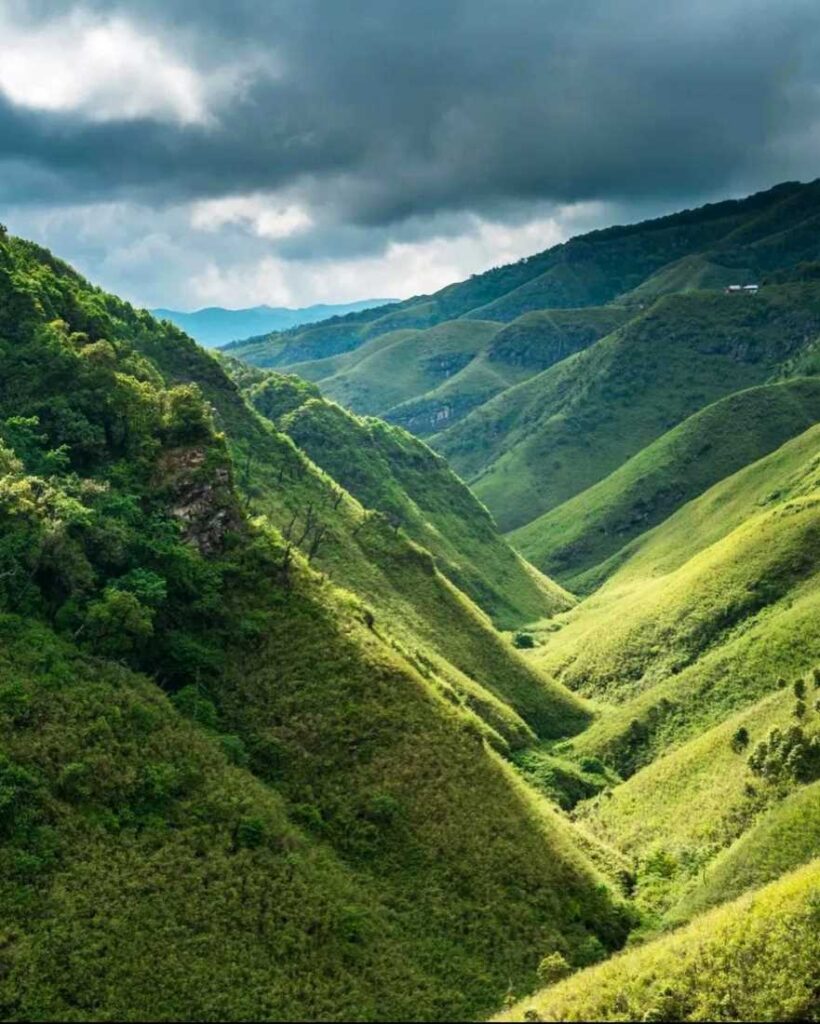
History and Geography of Dzukou Valley
The Dzukou Valley is located at the border of Nagaland and Manipur, two states in the northeast of India. The name “Dzukou” means “cold water” in the local Angami language, referring to the streams that flow through the valley. The valley is also known as the “Valley of Flowers” or the “Valley of Eternal Charm” because of its rich floral diversity and scenic beauty.
The valley has a long and interesting history, dating back to ancient times. According to legend, the valley was once inhabited by a demon named Dzukou, who terrorized the people living nearby. A brave warrior named Japfu challenged the demon to a fight and managed to defeat him. The demon fled to the valley and hid there, giving it his name. The people then celebrated the victory by planting flowers in the valley, making it a symbol of peace and harmony.
The valley is also a part of the Naga culture and folklore, as it is believed to be the resting place of the departed souls. The valley is considered sacred by the Naga tribes, who visit it to perform rituals and ceremonies. The valley is also a popular destination for adventure seekers and nature lovers, who come to enjoy its serene and picturesque landscape.
The valley covers an area of about 80 square kilometers and lies at an altitude of about 2452 meters above sea level. The valley is surrounded by the Japfu range, which is the second-highest peak in Nagaland, after Mount Saramati. The valley has a unique topography, with gentle slopes, flat grasslands, and rocky outcrops. The valley is also home to several streams and rivers, such as the Dzukou River, the Dzuleke River, and the Japfu River, which provide water and nourishment to the valley.
Location of Dzukou Valley: How to get it
The Dzukou Valley is not very easy to access, as it is located in a remote and hilly region. However, with proper planning and guidance, you can reach the valley without much hassle. The nearest city to the valley is Dimapur, which is the largest city and the commercial hub of Nagaland. Dimapur is well connected to the rest of India by air, rail, and road.
From Dimapur, you can take a bus or a taxi to Kohima, the capital of Nagaland, which is about 74 km away. From Kohima, you can hire a local taxi to the base camp at Vishwema village or Zakhama village, which are about 25 km away from Kohima. From the base camp, you can start your trek to the valley, which will take about 5-6 hours.
Dzukou Valley by Train
If you prefer to travel by train, you can take a train to Dimapur, which is the nearest railway station to the valley. Dimapur is connected to major cities like Delhi, Kolkata, Guwahati, Bangalore, Chennai, etc. by various trains. The fare varies from Rs. 500 to Rs. 2000 depending on the class and distance. Here are some of the trains that you can take to Dimapur from different places in India:
From Guwahati: You can take the Guwahati – Dibrugarh Express (15901), which runs daily and takes about 5 hours to reach Dimapur. The fare is around Rs. 200 for a sleeper class and Rs. 700 for an AC 3-tier.
From Kolkata: You can take the Kamrup Express (15959), which runs daily and takes about 18 hours to reach Dimapur. The fare is around Rs. 500 for a sleeper class and Rs. 1500 for an AC 3-tier.
From New Delhi: You can take the Brahmaputra Mail (14055), which runs daily and takes about 38 hours to reach Dimapur. The fare is around Rs. 800 for a sleeper class and Rs. 2500 for an AC 3-tier.
From Bangalore: You can take the Guwahati Express (12509), which runs thrice a week and takes about 52 hours to reach Dimapur. The fare is around Rs. 1000 for a sleeper class and Rs. 3000 for an AC 3-tier.
From Chandigarh: You can take the Chandigarh – Dibrugarh Express (15903), which runs twice a week and takes about 48 hours to reach Dimapur. The fare is around Rs. 900 for a sleeper class and Rs. 2800 for an AC 3-tier.
From Amritsar: You can take the Amritsar – Dibrugarh Express (15933), which runs once a week and takes about 50 hours to reach Dimapur. The fare is around Rs. 900 for a sleeper class and Rs. 2800 for an AC 3-tier.
From Dibrugarh: You can take the Dibrugarh – Dimapur Passenger (55901), which runs daily and takes about 4 hours to reach Dimapur. The fare is around Rs. 100 for a general class and Rs. 200 for a chair car.
From Chennai: You can take the Chennai – Dibrugarh Express (15929), which runs once a week and takes about 58 hours to reach Dimapur. The fare is around Rs. 1100 for a sleeper class and Rs. 3300 for an AC 3-tier.
Dzukou Valley by Air
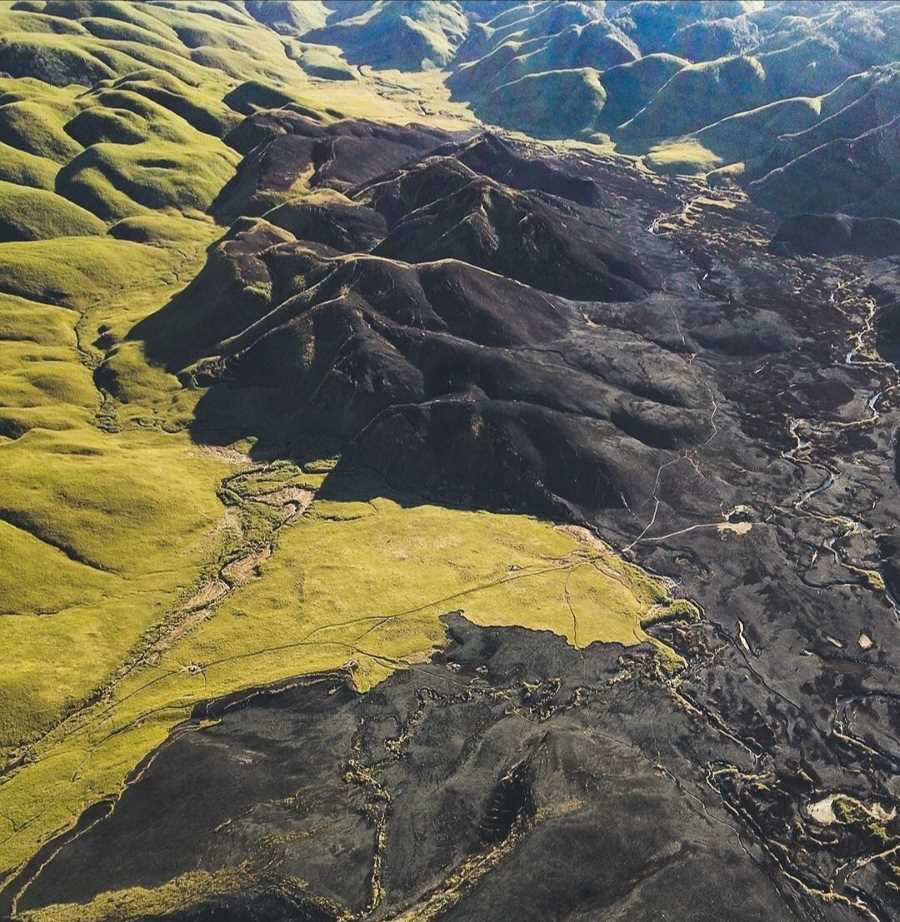
If you prefer to travel by air, you can take a flight to Dimapur, which is the nearest airport to the valley. Dimapur has a domestic airport, which is connected to major cities like Delhi, Kolkata, Dibrugarh, Bangalore, etc. by various airlines. The fare ranges from Rs. 3000 to Rs. 6000 depending on the season and availability. Here are some of the flights that you can take to Dimapur from different places in India:
From Kolkata: You can take the IndiGo flight (6E 797), which runs daily and takes about 1 hour to reach Dimapur. The fare is around Rs. 3000 for an economy class and Rs. 5000 for a premium economy class.
From Delhi: You can take the Air India flight (AI 705), which runs daily and takes about 2 hours to reach Dimapur. The fare is around Rs. 4000 for an economy class and Rs. 6000 for a business class.
From Dibrugarh: You can take the Alliance Air flight (9I 741), which runs daily and takes about 40 minutes to reach Dimapur. The fare is around Rs. 3000 for an economy class and Rs. 5000 for a business class.
From Bangalore: You can take the IndiGo flight (6E 797), which runs daily and takes about 4 hours to reach Dimapur. The fare is around Rs. 5000 for an economy class and Rs. 8000 for a premium economy class.
From Chandigarh: You can take the Air India flight (AI 9813), which runs thrice a week and takes about 3 hours to reach Dimapur. The fare is around Rs. 4000 for an economy class and Rs. 6000 for a business class.
From Dimapur to Kohima
Once you reach Dimapur, you can take a bus or a taxi to Kohima, which is the capital of Nagaland and the gateway to the Dzukou Valley. The distance between Dimapur and Kohima is about 74 km and it will take about 3 hours to cover it. The fare is around Rs. 300 for a bus and Rs. 1000 for a taxi. You can find buses and taxis at the Dimapur railway station or the airport. The buses and taxis are usually available from 6 am to 6 pm.
Biodiversity of Dzukou Valley
The Dzukou Valley is a treasure trove of biodiversity, as it hosts a variety of flora and fauna. The valley is famous for its endemic and rare species of flowers, especially the Dzukou lily, which is the state flower of Nagaland. The Dzukou lily is a pinkish-purple flower that blooms from June to September and can only be found in the Dzukou Valley. The valley also has other types of orchids, rhododendrons, primulas, euphorbias, and aconitums, which add to its beauty and fragrance.
The valley is also home to many animals, birds, insects, and reptiles, some of which are endangered or threatened. The valley has a rich population of mammals, such as the Himalayan black bear, the red panda, the barking deer, the wild boar, the porcupine, and the civet. The valley also has a diverse range of birds, such as the pheasant, the hornbill, the partridge, the cuckoo, the woodpecker, and the sunbird. The valley also has many insects, such as butterflies, moths, beetles, and bees, which pollinate the flowers and create a buzzing sound. The valley also has some reptiles, such as snakes, lizards, and frogs, which live near the streams and ponds.
The valley is a paradise for nature lovers and wildlife enthusiasts, who can observe and admire the biodiversity of the valley. The valley also offers a great opportunity for photography and videography, as it provides a stunning backdrop for capturing the beauty and diversity of nature.
Dzukou Valley Trek
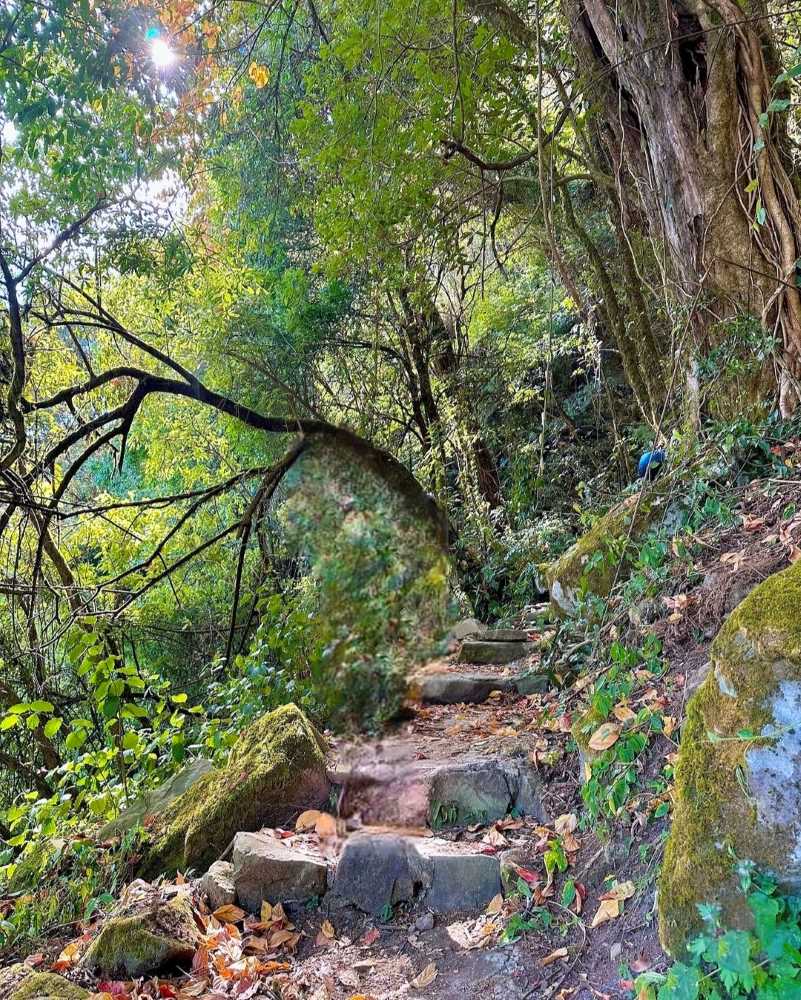
The Dzukou Valley Trek is one of the most popular and rewarding treks in the northeast of India. The trek takes you to the enchanting valley of flowers, where you can enjoy the panoramic views of the hills, forests, and streams. The trek is suitable for beginners, as it does not involve much climbing or technical skills. The trek can be done in 2-3 days, depending on your pace and preference.
There are two main routes to reach the Dzukou Valley from the base camp at Vishwema village or Zakhama village. The first route is via Zakhama, which is shorter and steeper. The second route is via Vishwema, which is longer and gentler. Both routes converge at the Dzukou Valley, where you can camp for the night. The next day, you can explore the valley and return to the base camp by the same route or the opposite route. Here are the details of each route:
From Kohima to Via Zakhama Trek
The Zakhama route is the more popular and faster route to reach the Dzukou Valley. The distance from Zakhama to the valley is about 15 km, and it takes about 5-6 hours to cover it. The trail starts from the Zakhama check post, where you have to register and pay a nominal fee. The trail then ascends through a dense forest, where you can see various types of trees, plants, and birds. The trail is well-marked and easy to follow, but it is also steep and slippery at some places. You have to cross several streams and bridges along the way, which can be refreshing and challenging.
The trail then reaches a point where you can see the Japfu Peak, which is the second-highest peak in Nagaland. The trail then flattens and widens, and you can see the Dzukou Valley in the distance. The trail then descends to the valley, where you can see the Dzukou River and the Dzukou hut, which is a wooden shelter for the trekkers. You can camp near the hut or anywhere in the valley, as long as you respect the nature and the culture of the place. You can also enjoy the sunset and the starry night from the valley, which can be a mesmerizing experience.
Day-1
Start from Kohima and reach Zakhama by taxi, which will take about an hour. The fare is around Rs. 1500 for a round trip. Start the trek from the Zakhama check post, where you have to register and pay Rs. 50 per person as an entry fee. Trek through the forest, crossing streams and bridges, and reach the point where you can see the Japfu peak. The distance is about 10 km and it takes about 4 hours to cover it.
Trek downhill to the Dzukou Valley, where you can see the Dzukou River and the Dzukou hut. The distance is about 5 km and it takes about an hour to cover it. Camp near the hut or anywhere in the valley, and enjoy the evening and the night.
Day-2
Explore the valley and admire the beauty and diversity of the flowers, especially the Dzukou lilies and orchids. You can also visit the caves and the waterfalls in the valley, which are hidden and mysterious. Return to the base camp by the same route or the opposite route, depending on your choice. The distance is about 15 km and it takes about 5-6 hours to cover it. Reach Kohima by taxi and end the trek.
From Kohima to Via Vishwema Trek
The Vishwema route is the less popular and slower route to reach the Dzukou Valley. The distance from Vishwema to the valley is about 20 km, and it takes about 7-8 hours to cover it. The trail starts from the Vishwema check post, where you have to register and pay a nominal fee. The trail then ascends through a pine forest, where you can see various types of trees, plants, and birds. The trail is well-marked and easy to follow, but it is also long and gradual. You have to cross several streams and bridges along the way, which can be refreshing and challenging.
The trail then reaches a point where you can see the Dzukou Valley in the distance. The trail then descends to the valley, where you can see the Dzukou River and the Dzukou hut, which is a wooden shelter for the trekkers. You can camp near the hut or anywhere in the valley, as long as you respect the nature and the culture of the place. You can also enjoy the sunset and the starry night from the valley, which can be a mesmerizing experience.
Day-1
Start from Kohima and reach Vishwema by taxi, which will take about an hour. The fare is around Rs. 1500 for a round trip. Start the trek from the Vishwema check post, where you have to register and the entry fee for each person is Rs=50.
Trek through the pine forest, crossing streams and bridges, and reach the point where you can see the Dzukou Valley. The distance is about 15 km and it takes about 6 hours to cover it. Trek downhill to the Dzukou Valley, where you can see the Dzukou River and the Dzukou hut. The distance is about 5 km and it takes about an hour to cover it. Camp near the hut or anywhere in the valley, and enjoy the evening and the night.
Day-2
Explore the valley and admire the beauty and diversity of the flowers, especially the Dzukou lilies and orchids. You can also visit the caves and the waterfalls in the valley, which are hidden and mysterious. Return to the base camp by the same route or the opposite route, depending on your choice. The distance is about 20 km and it takes about 7-8 hours to cover it. Reach Kohima by taxi and end the trek.
Instructions, Tips, and Gears for Dzukou Valley Trek
The Dzukou Valley Trek is moderate, but it still requires some preparation and precautions. Here are some instructions, tips, and gear that you will need for the trek:
Take Permit
You need to obtain a permit from the Nagaland Tourism Department or the Nagaland Adventure and Mountaineering Association (NAMA) before going for the trek. You can also get the permit from the check posts at Zakhama or Vishwema, where you have to pay the entry fee of each person is Rs=50. You also have to carry your identity proof and passport-size photos for the permit.
Hire Local Guide
You need to hire a local guide or a porter for the trek, as they can help you with the route, the culture, and the safety. You can find them at the base camp or through a travel agent. The cost is around Rs. 500 to Rs. 1000 per day, depending on the service and the season.
Carry Necessary Equipment
You need to carry your camping equipment, such as a tent, a sleeping bag, a sleeping mat, a stove, a utensil, a water bottle, a torch, and a first aid kit. You can also rent them from the base camp or a travel agent. The cost is around Rs. 500 to Rs. 1000 per day, depending on the quality and the season.
Food and Snack
You need to carry your food and snacks, as there are no shops or restaurants in the valley. You can also buy some local food, such as rice, dal, vegetables, and meat, from the villagers at the base camp. The cost is around Rs. 100 to Rs. 200 per meal, depending on the quantity and the season.
Clothes and Shoes
You need to wear comfortable and warm clothes, such as a jacket, a sweater, a cap, a scarf, a glove, and a sock, as the weather can be cold and windy in the valley. You also need to wear sturdy and waterproof shoes, such as trekking shoes or boots, as the trail can be rough and wet in some places.
Carry Essential Items
You need to carry some essential items, such as sunscreen, lip balm, sunglasses, a camera, a power bank, a book, a map, and a compass, as they can be useful and enjoyable in the valley. You also need to carry some extra cash, as there are no ATMs or card machines in the valley.
Follow the Rules
You need to follow some rules and etiquette, such as respecting the nature and the culture of the place, not littering or polluting the valley, not plucking or damaging the flowers, not making noise or disturbing the wildlife, not trespassing or entering the private property, and not taking photos or videos without permission.
Nearest Attractive Spots for Tourists in Dimapur
If you have some extra time and energy after the Dzukou Valley Trek, you can also visit some of the nearest attractive spots for tourists in Dimapur, which is the largest city and the commercial hub of Nagaland. Dimapur has a rich and diverse history, culture, and nature, which can offer you a glimpse of Naga life and heritage. Here are some of the places that you can visit in Dimapur:
Kachari Ruins
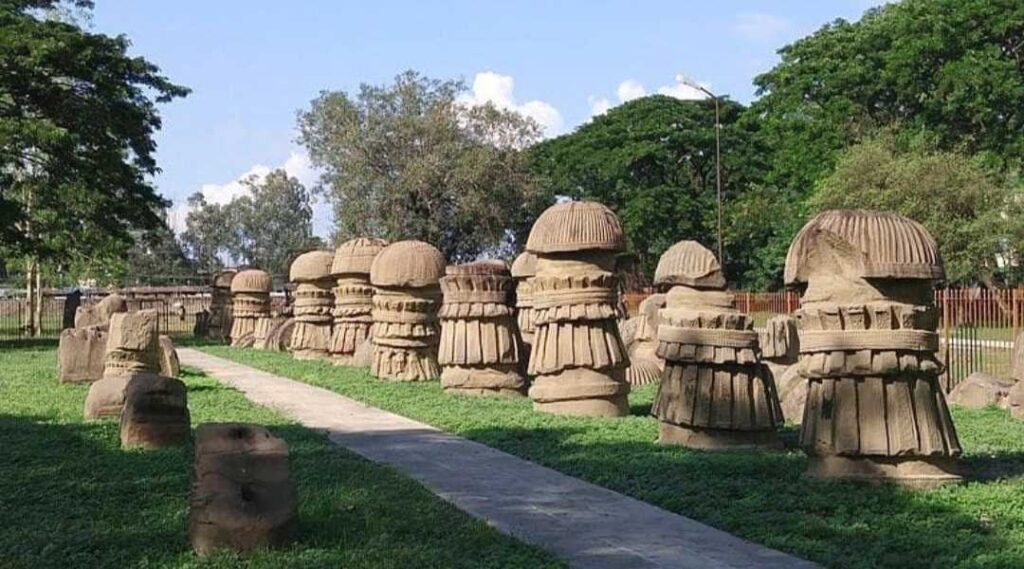
The Kachari Ruins are the remnants of the ancient kingdom of the Kachari tribe, who ruled over the region from the 13th to the 19th century. The ruins are located near the Dimapur railway station and consist of various stone structures, such as pillars, arches, domes, and tanks. The most prominent and mysterious feature of the ruins is the mushroom-shaped monoliths, which are believed to be associated with some rituals or ceremonies. The ruins are a testimony to the architectural and artistic skills of the Kachari tribe, and also a reflection of their culture and religion.
Triple Falls
The Triple Falls are a spectacular sight of nature, where three streams of water cascade down from a height of about 280 feet, forming a pool at the bottom. The falls are located in the Seithekima village, which is about 16 km from Dimapur. The falls are surrounded by lush greenery and rocky cliffs, which create a scenic and serene atmosphere. The falls are also a popular spot for picnics, camping, and trekking, as there are several trails and spots to explore and enjoy.
Nagaland Science Centre
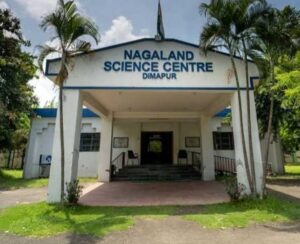

The Nagaland Science Centre is a place where you can learn and have fun at the same time. The centre is located on the Dimapur-Kohima road and is a part of the National Council of Science Museums. The centre has various galleries and exhibits, such as the Fun Science Gallery, the Children’s Corner, the Our Senses Gallery, the Taramandal, and the Science Park, where you can interact and experiment with various scientific concepts and phenomena.
The centre also organizes various programs and activities, such as workshops, quizzes, competitions, and shows, to promote scientific awareness and curiosity among visitors.
Nagaland Zoological Park
The Nagaland Zoological Park is a place where you can see and admire the wildlife of Nagaland and other regions. The park is located in the Rangapahar Reserve Forest, which is about 6 km from Dimapur. The park covers an area of about 176 hectares and houses various animals, birds, and reptiles, such as the tiger, the leopard, the deer, the hornbill, the peacock, the python, and the crocodile.
The park also has a botanical garden, where you can see various types of plants and flowers. The park is a great place to visit for nature lovers and wildlife enthusiasts, who can observe and learn about the biodiversity and conservation of the region.
Accommodation Options in Dzukou Valley
There are no luxury accommodations or hotels in Dzukou Valley, as it is a remote and natural place. The only option for staying in the valley is a basic rest house, which offers two dormitories and five private rooms. The rest house has a wooden shelter, a fireplace, and a kitchen, but no electricity or running water. The price for a bed in the dormitory is Rs. 50 per night, and the price for a private room is Rs. 200 per night.
Alternatively, you can bring your tent and camp anywhere in the valley, as long as you respect the nature and the culture of the place. You can also rent a tent from the rest house or a travel agent in Kohima. The price for renting a tent is around Rs. 500 to Rs. 1000 per day, depending on the quality and the season.
Accommodation Options in Kohima
There are many staying options in Dimapur, the largest city and the commercial hub of Nagaland. You can choose from hotels, homestays, campsites, and heritage properties, depending on your budget and preference. Here are some of the popular and recommended places to stay in Dimapur:
Hotel Grand Tizu:
This is a relatively posh hotel, with spacious rooms, modern amenities, and a restaurant. The hotel is located near the Kohima War Cemetery and the Naga Bazaar. The price for a double room is around Rs. 5,074 per night.
Razhu Pru:
This is a rustic heritage boutique hotel, with cozy rooms, traditional decor, and a garden. The hotel is located near the Kisama Heritage Village and the Japfu Peak. The price for a double room is around Rs. 2,500 per night.
The Heritage:
This is a superbly situated, converted colonial bungalow, with elegant rooms, antique furniture, and a fireplace. The hotel is located near the Kohima Museum and the Catholic Church. The price for a double room is around Rs. 3,000 per night.
Native Stories Homestay Tribal Heritage:
This is a homestay that offers a complete experience of the tribal culture of Kohima. The homestay is nestled in the lap of Mt. Japfu, and offers traditional and organic food, along with basic amenities. The price for a double room is around Rs. 800 per night.
Hillfoot Camp & Home Stay:
This is a campsite and a homestay that offers a relaxing getaway in the hills of Kohima. The campsite and the homestay are located near the Dzukou Valley and the Pulie Badze, and offer tents, cottages, and huts, along with a bonfire and a barbecue. The price for a double room is around Rs. 1,000 per night.
Conclusion
The Dzukou Valley Trek is a wonderful and memorable experience that can fill your senses and soul with joy and peace. The trek takes you to the Valley of Flowers, where you can see the beauty and diversity of nature. The trek also allows you to learn and appreciate the history and culture of the Naga people, who live in harmony with nature and the spirit. The trek is suitable for anyone who loves adventure and nature and can be done in 2-3 days with proper planning and preparation.
If you are planning to visit the Dzukou Valley, you can also visit some of the nearest attractive spots for tourists in Dimapur, which can offer you a glimpse of Naga life and heritage. Dimapur has a rich and diverse history, culture, and nature, which can offer you a lot of things to see and do. You can visit the Kachari Ruins, the Triple Falls, the Nagaland Science Centre, and the Nagaland Zoological Park, which are some of the places that you can visit in Dimapur.
FAQs
Q: Which month is the best to visit Dzukou Valley?
A: The best time to visit Dzukou Valley is the blooming season from April to September.
Q: What is the myth of Dzukou Valley?
A: There are many myths and stories ranging from ghosts, existing white elephants and dead stop before departing.
Q: What is the difficulty level of Dzukou trek?
A: Trek difficulty level ranges from easy to moderate and the tip is start trek as early as possible.
Q: Does it snow in Dzukou Valley?
A: When the winter is at its peak the entire valley gets covered with snow.
Q: Where is the starting point of Dzukou Valley Trek?
A: Kohima is the starting point of Dzukou valley trek.
Q: What is the nickname of Dzukou Valley?
A: Dzukou Valley is also called the valley of flowers.
Q: What is the meaning of Dzuko?
A: It comes from the Naga tribe name Angami/Mao, which means “Cold Water”.
Q: Is there Internet in Dzukou Valley?
A: Sorry to say, there is no internet and mobile network in the valley.
Q: What is the quote from Dzukou Valley?
A: There are many but the famous one is “going to Dzukou is nothing hard like going to heaven”.
Q: What is the hardest trek in India?
A: I can’t specify but 3 most difficult treks are “Auden’s Col Trek”, “Kang La Trek”, and “Pin Parvati Pass Trek”.
Q: Which is the hardest trek in Kerala?
A: No doubt about that and it is “Agasthyarkoodam”.
Q: Is Dzukou Valley the capital of Nagaland?
A: No, Kohima city is the capital of Nagaland.
Q: Which peak is in Kohima?
A: “Japfu Peak” is one of the difficult trek in Kohima, Nagaland.
Read More
Thank you for joining me on this incredible adventure to some of the most beautiful places on Place Attract! I hope you enjoyed seeing these amazing places with me through your screen. But this is not the end! There are still more secrets and wonders to uncover. No matter if you are a seasoned traveler or a novice, Place Attract is the best place to find travel ideas. So, what are you waiting for? Dive deeper into the marvels of our planet and explore more magical places like: Polo Forest , Mukeshpuri
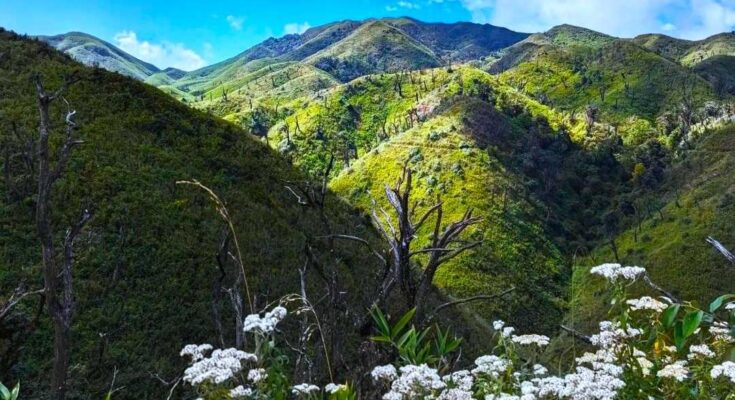
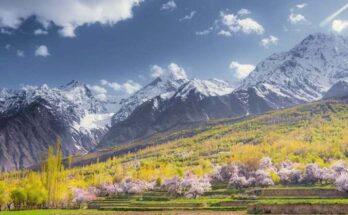
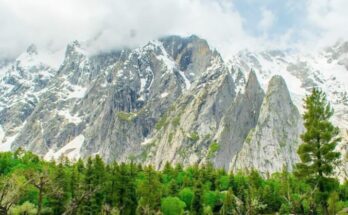
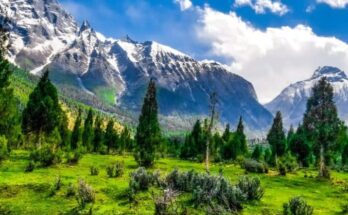
One Comment on “Dzukou Valley Trek: A Guide to the Valley of Flowers”